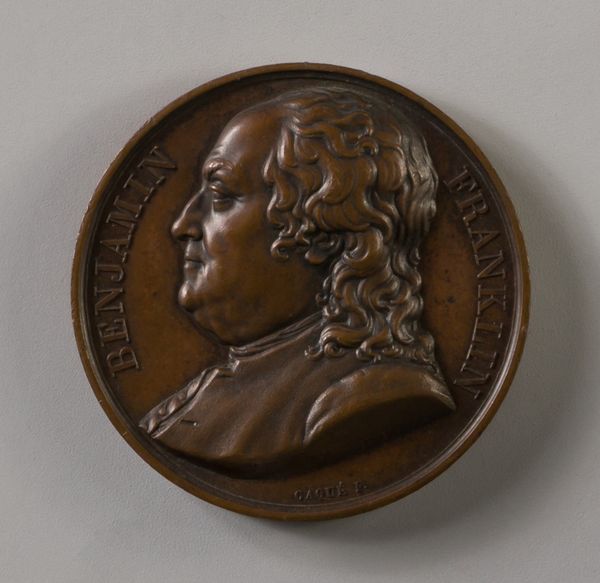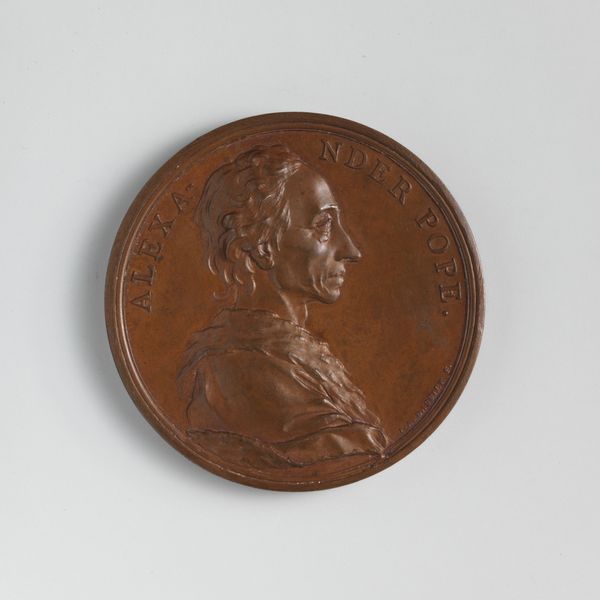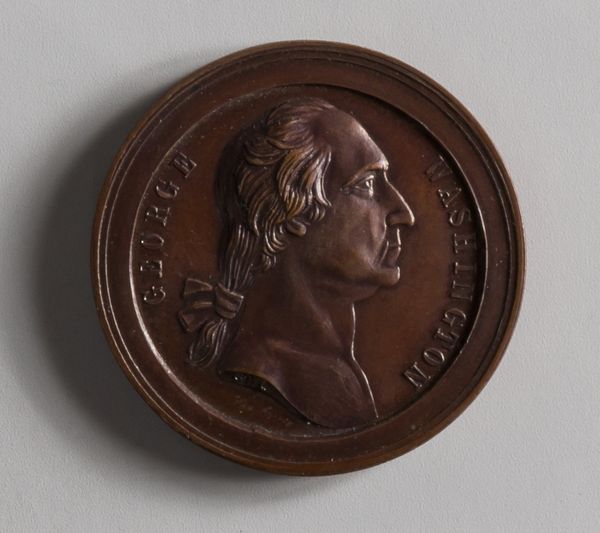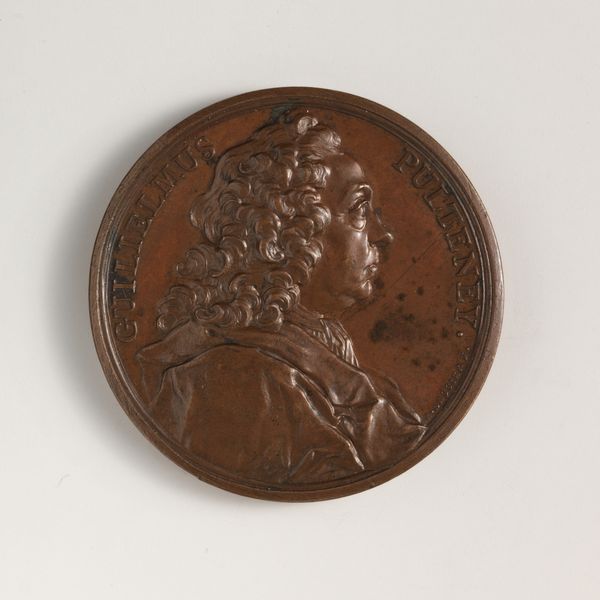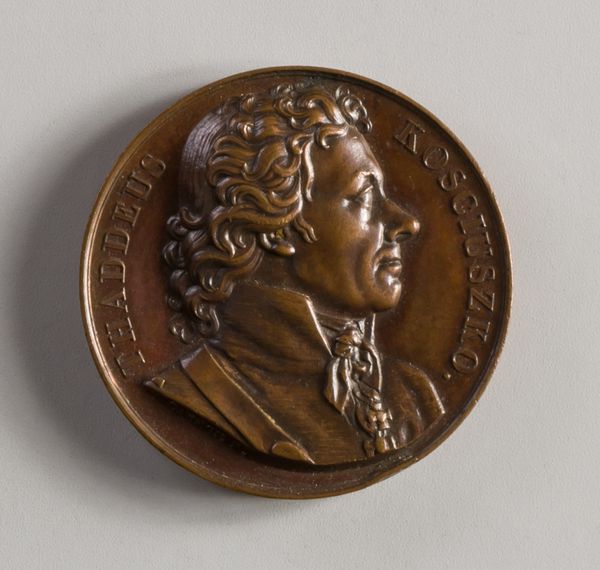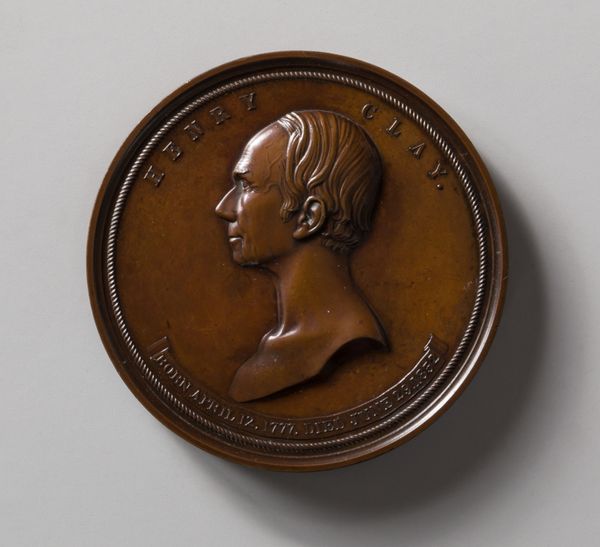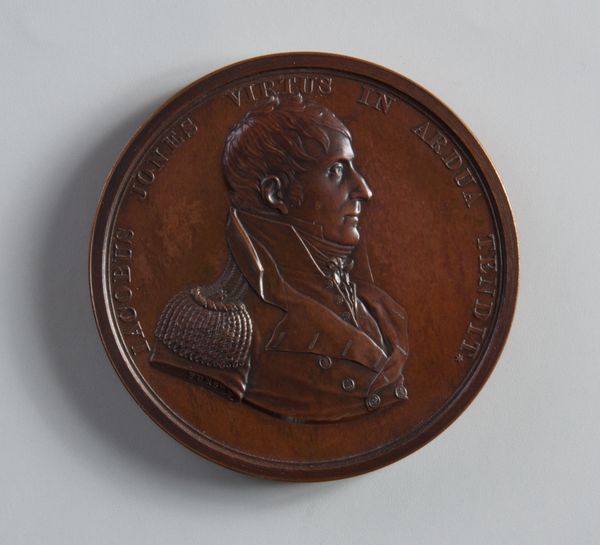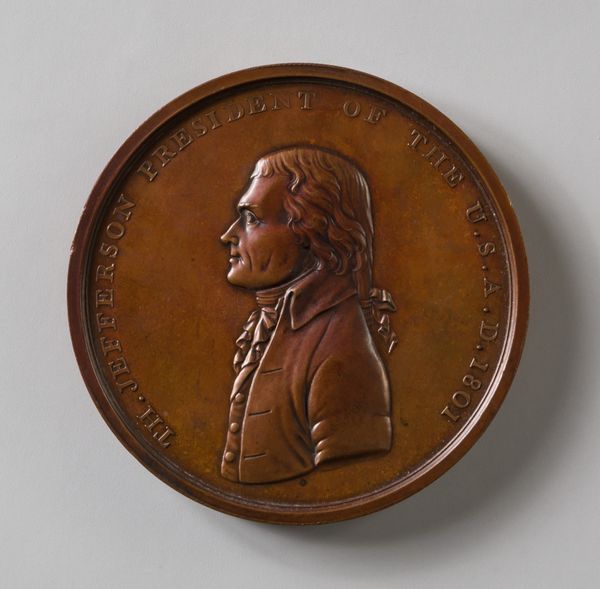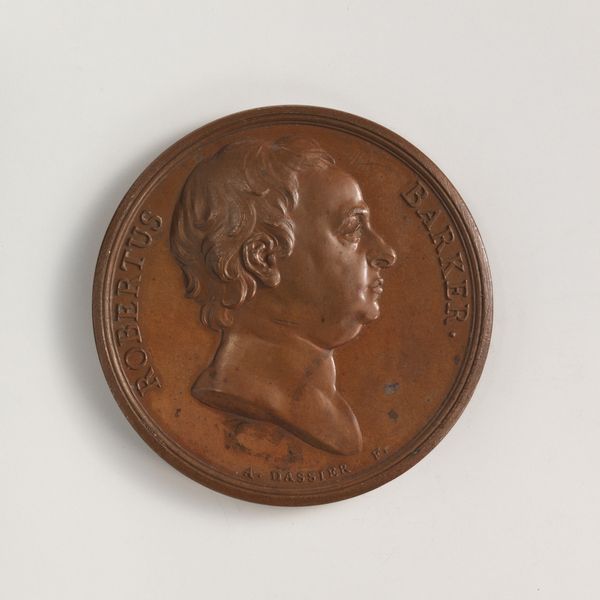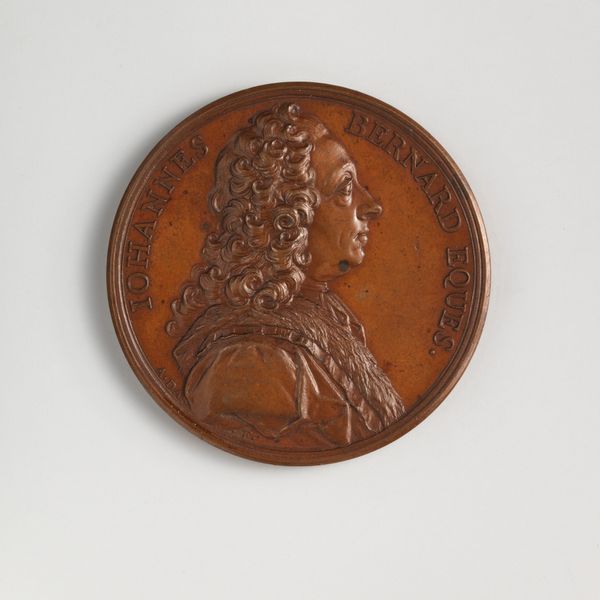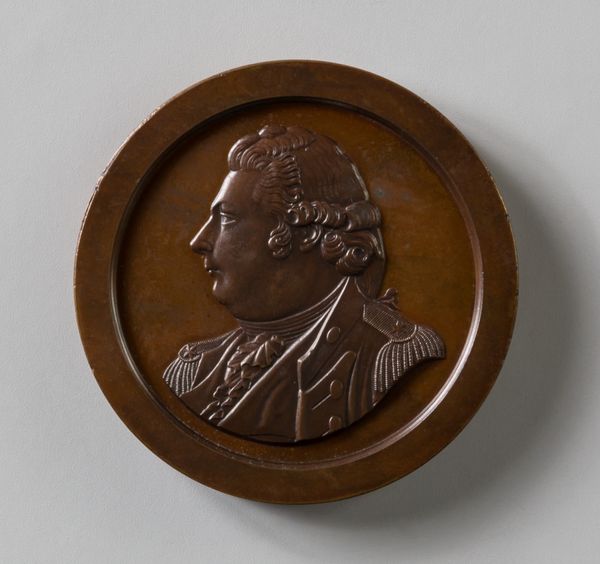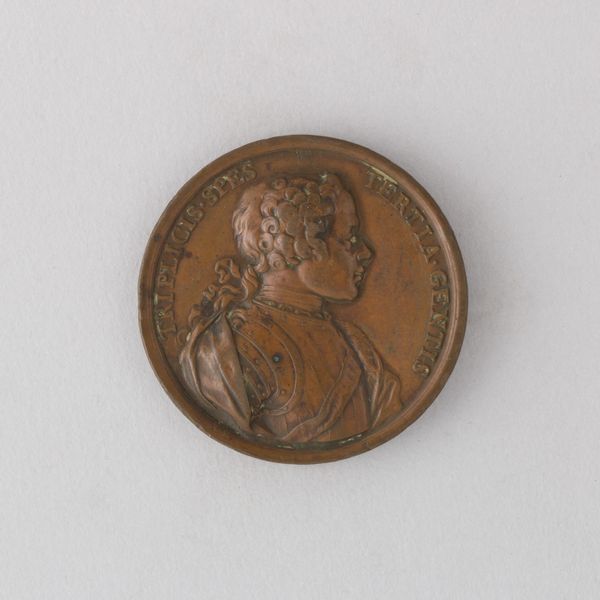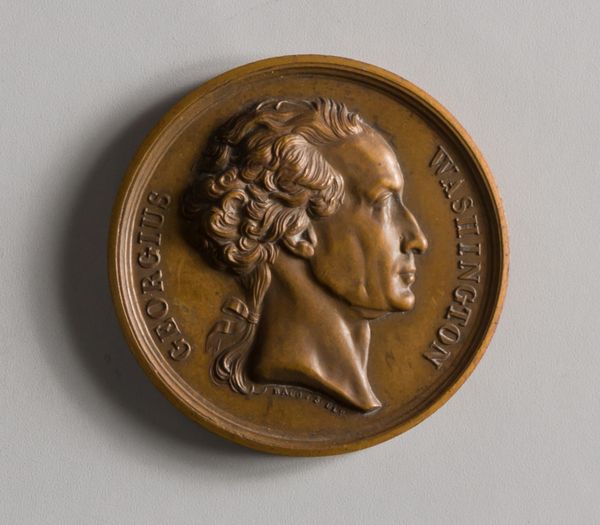
Sansom Medal: Franklin's two great achievements 1800 - 1815
0:00
0:00
metal, bronze, sculpture
#
portrait
#
neoclacissism
#
metal
#
sculpture
#
bronze
#
sculpture
#
men
Dimensions: Diameter: 1 5/8 in. (41 mm)
Copyright: Public Domain
Curator: Here we have a bronze medal, "Sansom Medal: Franklin's two great achievements," crafted between 1800 and 1815 by Johann Mathias Reich. Editor: Its aged bronze surface and bas-relief give it a gravitas, a real sense of historical weight. There is such meticulousness in the detailing; even in the profile portrait of Franklin I can see incredible precision. Curator: Precisely. Note the inscription surrounding the portrait: it commemorates Franklin's perceived triumphs in overturning tyranny and furthering enlightenment. This piece emerges in the Neoclassical period, where these Enlightenment values of reason and revolution are very prevalent. We have to think about the wider implications of who and what is remembered through objects like this. Editor: Yes, the very medium of a medal implies commemoration and valorization. I see the clean lines and defined form echo the ideals of Neoclassicism, looking back to classical models of simplicity and order in a visual articulation of republican ideals. Curator: The portrayal of Franklin in profile situates him within a lineage of influential historical figures immortalized in similar ways. His contribution and engagement within abolitionist movements is essential when we view objects celebrating these men of power. Editor: And there’s something about the use of bronze itself – it connects the object to traditions of sculpture and monumentality that speak of legacy and lasting significance, though also raises considerations on accessibility and permanence of certain legacies versus others. Curator: Viewing this, what’s paramount to understand is how it functions as a deliberate construction of a national hero. Who is allowed such permanence and remembrance, what facets of their stories are celebrated, and, crucially, which are suppressed or omitted entirely? Editor: Through its refined form, it represents Enlightenment values through visual cues. Its subtle modulations of light play across the portrait in quiet but dignified testament. I can admire how the artist used those cues and how that enhances the viewing of it. Curator: Seeing it as a symbolic site through which sociopolitical narratives get crafted makes it valuable for reexamining. The portrayal becomes an intersection point in assessing ideas on national progress and historical truth. Editor: The beauty is in its detail. It captures its values within an ordered artistic sensibility of the time. Curator: Definitely. Now let's explore how later artworks address the unfinished revolutions from Franklin’s period in ways this subtle medal cannot.
Comments
No comments
Be the first to comment and join the conversation on the ultimate creative platform.
